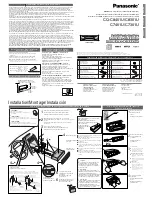
22
Standalone G-Converter
SALES: 0118 965 5100
Back-To-Back Demonstration Connection
For a simple demonstration, or local network use, two converters may be connected ‘back to
back’, using a cross over cable arrangement, one unit will automatically adopt the role of
clock master the other clock slave.
75 ohms BNC to PD7024 interfaces
For UK interfaces a pair of 75 Ohm BNC cables should be used, connecting TX on one unit
to RX on the other and visa versa.
120 ohms RJ45 twisted pair to CTR 12 interfaces
For European interfaces an RJ45 crossover cable should be used, as described in the
Appendices.
Set both units to X.21 interface (LK 9 to X.21 position).
Set one of the units to local (SW4, 1 = off) and the other to remote (SW4, 1 = on).
Select G.703 mode with unframed allowed and I lead following C. SW4, 2 = off, SW4, 3 =
off, SW4, 4 = SW4, 5 = off, SW4, 6 = on, SW4, 7 = SW4, 8 = off.
Connect an X.21 loop back connector to the G-Converter that is set up as remote. Connect a
Bert tester capable of running up to 2048Kbps configured as a X.21 DTE to the G-Converter
that is configured as local.
Commence passing data. Notice that the data rate is controlled by the rotary switch position
of the local unit and independent of the remote unit. Demonstrate all speeds from N = 0
(0bps) to N= 32 (2048Kbps).
Now change SW4, 2 = on, on both converters. This selects the link interface to be G.704.
Framed data must always be present. Demonstrate that the maximum value for N is now 31
and that when the G.704 interface is disconnected the seven-segment display shows “Er”
(because no framing is detected).












































